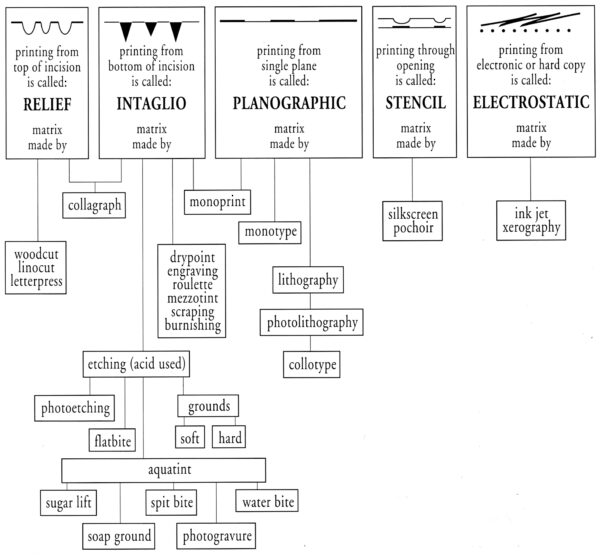Printing is the process of transferring ink from matrix to paper. Commonly, matrices are made by cutting wooden blocks, incising or chemically processing metal plates, but a matrix can be almost any surface that accepts ink the same way each time it’s applied. To make each impression—each individual print—the matrix or plate is inked and printed by pressing a sheet of paper against it. In some types of printing a press must be used, in others, hand pressure is enough.
There are only four ways of printing mechanically (as opposed to electronically): relief, intaglio, planographic, and stencil. Relief and intaglio printing are done from three-dimensional matrices. In intaglio, the ink fills grooves of varying depths and is pulled out by damp paper under the pressure of a printing press, and in relief the ink is taken from the top surfaces. In planographic and stencil printing, the matrix is flat, two dimensional.
